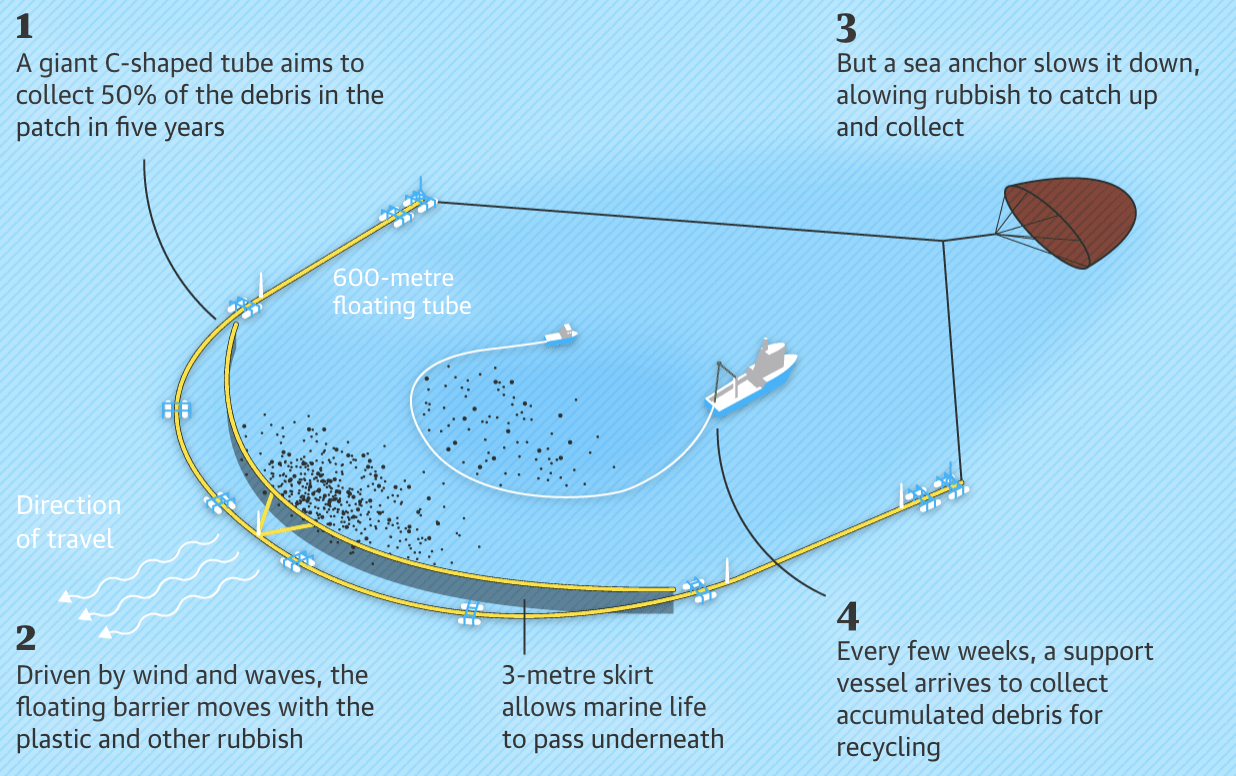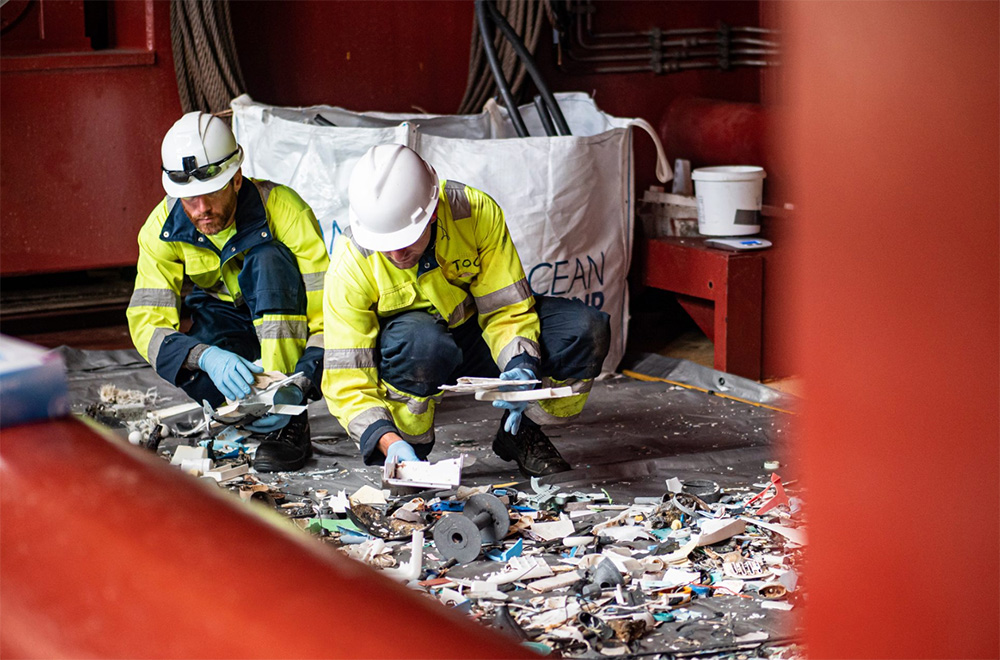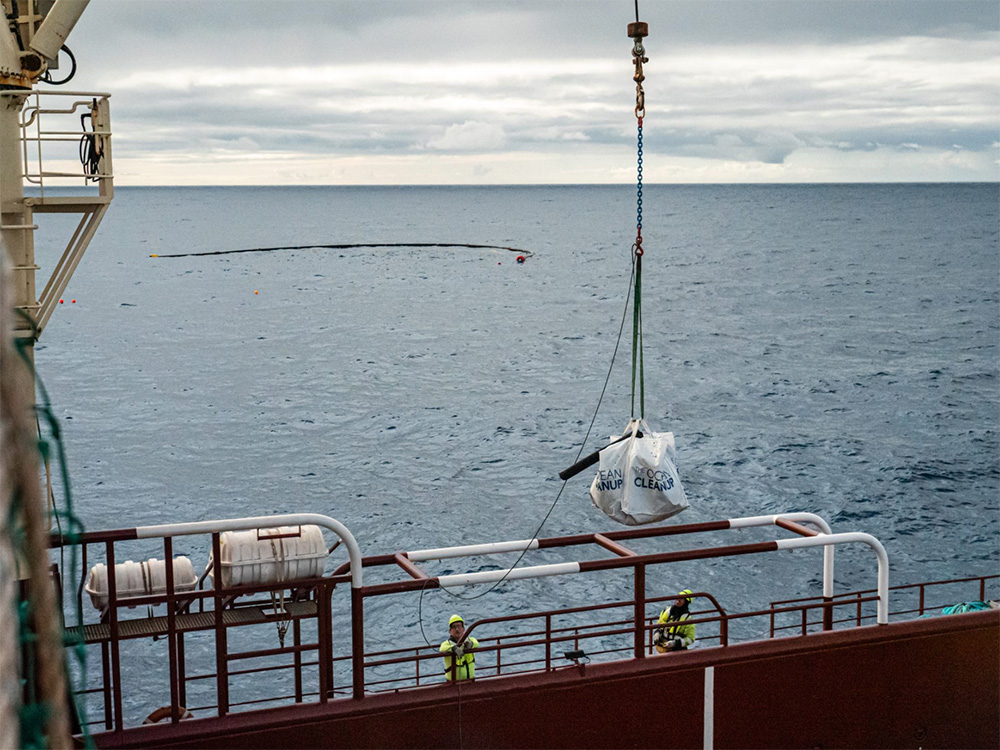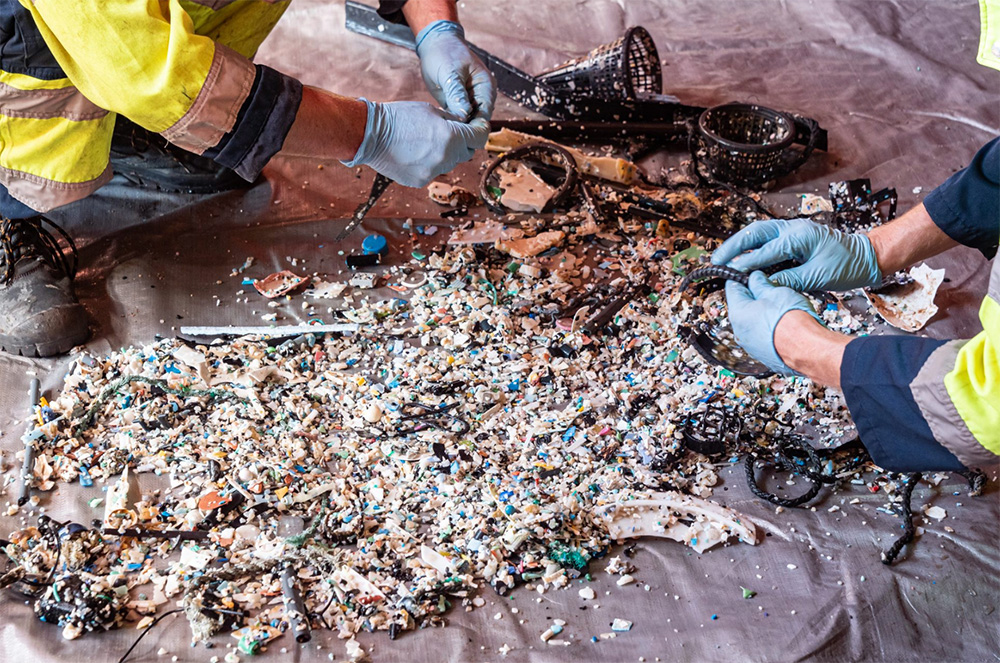- Sustainable Planet -
- 8mins -
- 1,225 views
Boyan Slat’s “The Ocean Cleanup” Successfully Collects Plastic For First Time
25-year-old Dutch inventor Boyan Slat announced The Ocean Cleanup – after several setbacks – has successfully captured plastic in the Great Pacific Garbage Patch.
THE OCEAN CLEANUP SUCCESSFULLY CATCHING PLASTIC IN THE GREAT PACIFIC GARBAGE PATCH
On Wednesday, The Ocean Cleanup announced that System 001/B is successfully capturing and collecting plastic debris. After one year of testing, they have succeeded in developing a self-contained system in the Great Pacific Garbage Patch that is using the natural forces of the ocean to passively catch and concentrate plastic, thereby confirming the most important principle behind the cleanup concept that was first presented by Boyan Slat at a TEDx conference in October 2012.

The Ocean Cleanup built a giant arm that catches plastic The Ocean Cleanup’s U-shaped plastic-catching system is engineered to passively collect trash from the garbage patch using the ocean’s current. It essentially creates a coastline in deep water. Source: TheOceanCleanup
THE OCEAN CLEANUP SUCCESSFULLY CATCHING PLASTIC IN THE GREAT PACIFIC GARBAGE PATCH
Six years ago, young Dutch inventor Boyan Slat began developing a system to rid the worlds oceans of harmful plastic. In 2013, the entrepreneur founded The Ocean Cleanup, a non-profit that aims to remove plastic from the Great Pacific Garbage Patch, a trashed-filled vortex in the ocean that’s more than double the size of Texas.
The group designed a device that passively collects plastic in its fold like a giant arm. However, the system has encountered several setbacks, including a design and manufacturing flaw that caused the plastic to spill back into the ocean. More recently, plastic began flowing over the top of a cork line that helps stabilise the system.
But on 2nd October 2019, The Ocean Cleanup announced that it had fixed that problem and that the device is now capturing and retaining plastic debris in the Great Pacific Garbage Patch.
So far, the team has collected large fishing nets, plastic objects such as cartons and crates, and microplastics as small as 1mm in length, it said.
The system’s ability to trap microplastics actually came as a surprise, the organisation said in a press release. The Ocean Cleanup’s previous research had suggested that microplastics rain down like ash toward the ocean floor and so should be less likely to stay floating close to the surface.
Because of that, the organisation has focused on removing larger pieces of plastic from the Great Pacific Garbage Patch.
Laurent Lebreton, one of the organisation’s researchers, previously told Business Insider that a lot of the debris that the device was catching “is really weathered and broken down, and some of it looks really old.”
He added: “We don’t really find any plastic bags or straws, but we find really thick, hard plastic fragments.”
The team has now demonstrated that the device can retain various types of plastic, thanks to a knew parachute system that debuted in June.
Source: BusinessInsider

The most visible portion of the device is a 2,000-foot (600 metre) pipe made of high-density polyethylene plastic. The pipe is connected to a screen that extends about 10 feet (3 metres) below the surface and is responsible for catching plastic debris. In the first version of the device, the screen was attached to the bottom of the pipe like a skirt. Source: TheOceanCleanup

Setback I – the plastic and the barrier move at same speed. NEW DESIGN LEADS TO IMPROVED PERFORMANCE
The aim of System 001/B was to trial modifications, which addressed known complications, primarily aimed at correcting the inconsistent speed difference between the system and the plastic. Consistency was achieved by slowing down the system with a parachute sea anchor, allowing for faster-moving plastic debris to float into the system. Source: The Ocean Cleanup

Setback II – Overtopping Once the speed issue was resolved, prominent plastic overtopping was observed – becoming the next technical challenge to solve. Due to the modularity of System 001/B, a modification to increase the size of the cork line was designed and implemented while the system was offshore. With the new cork line, minimal overtopping is now being observed, thus allowing the system to capture and concentrate the plastic. Source: The Ocean Cleanup

In June, The Ocean Cleanup launched a new version of the device, known as System 001/B. Once it was set up in the Pacific Garbage Patch, researchers did a series of tests.They wanted to know whether the device had to travel at a consistent speed – either faster or slower than the plastic in the water. So they tried a parachute anchor that decelerated the system, and they experimented with turning the device in the opposite direction and attaching inflatable bags to tow it faster than the plastic. Source: TheOceanCleanup








Not everyone is so enthusiastic about the project’s progress but Slat answers back
On January 22, an opinion piece was published in The Atlantic, originally titled “The Ocean Cleanup Project Could Destroy the Neuston” in which Rebecca Rae Helm, Assistant Professor specialising in the evolution and development of jellyfish at the University of North Carolina, Asheville, warned of the potential risk to this delicate ecosystem living at the ocean’s surface.
Dr. Helm also tweeted her concerns, along with one of The Ocean Cleanup’s own photographs (below), which she edited to highlight what she says are numerous of these creatures captured alongside the plastic trash.
The Ocean Cleanup soon responded, with CEO and Founder Boyan Slat writing a lengthy and detailed reply addressing all of Dr. Helm’s concerns directly.

Dr. Helm’s tweet in which she alleges Neuston are trapped alongside the plastic “Earlier this year I warned that @TheOceanCleanup would catch and kill floating marine life. This week they announced they’re collecting plastic, and their picture shows HUNDREDS of floating animals trapped with plastic (red circles). We need to talk about this.” Source: Twitter/RebeccaRHelm

